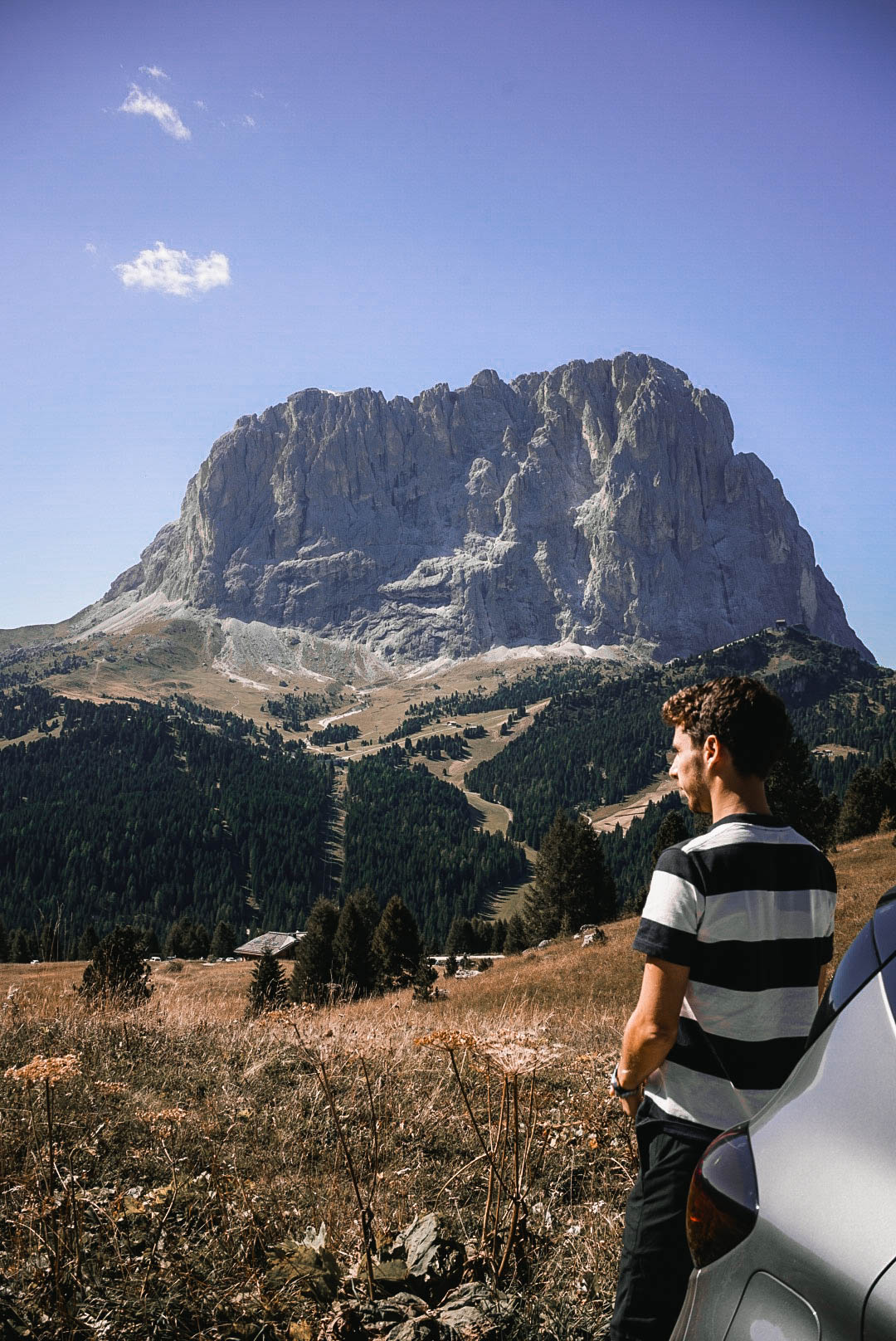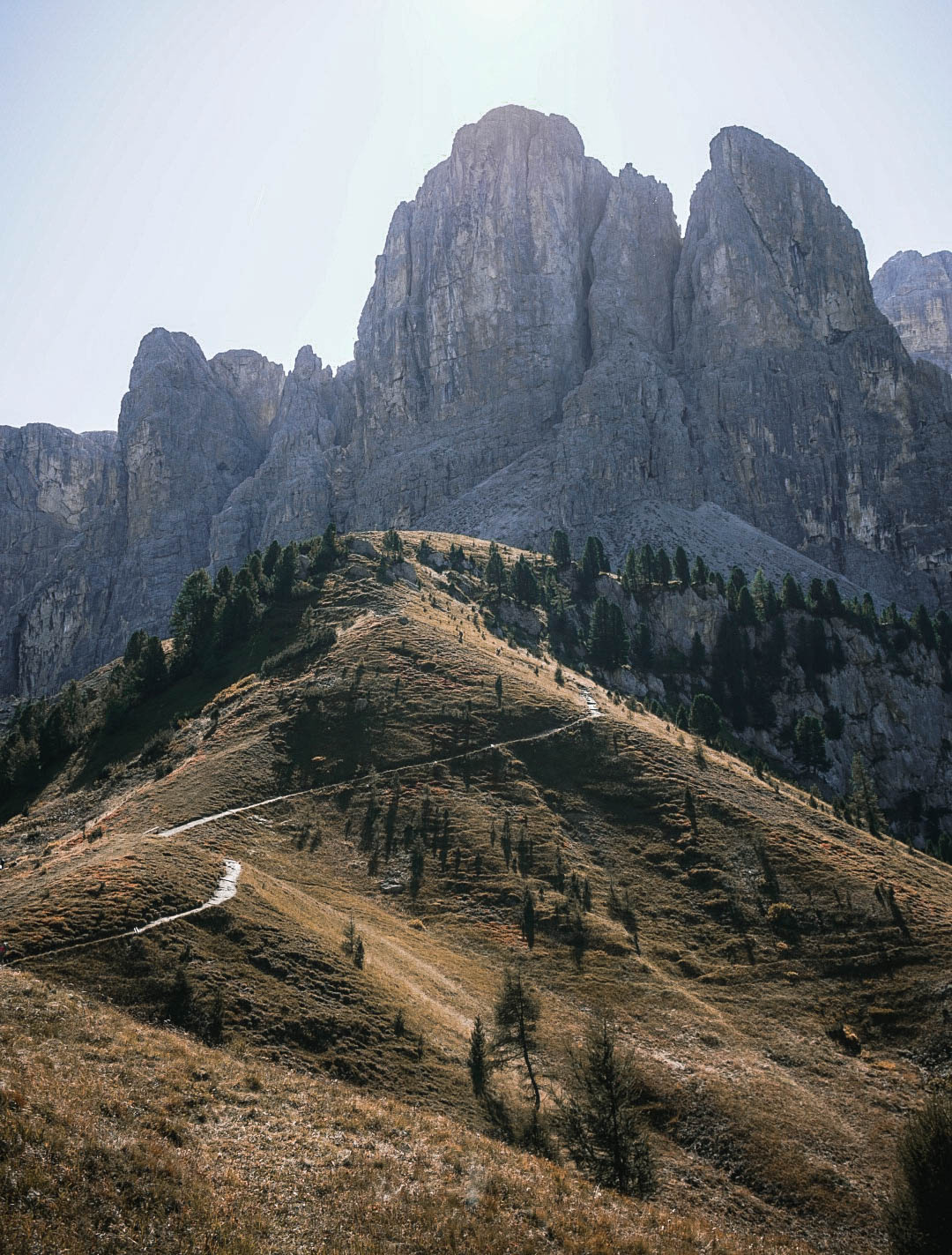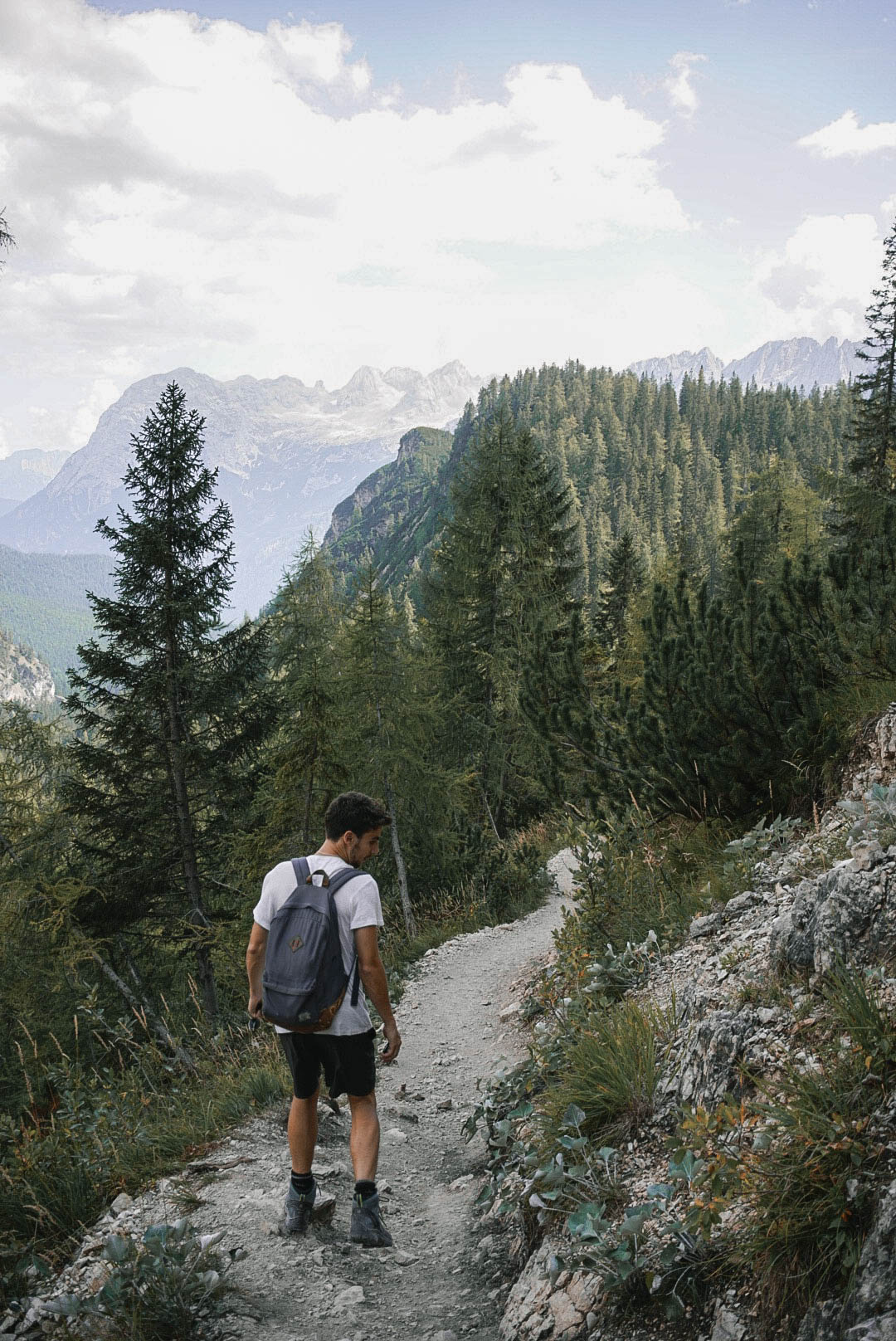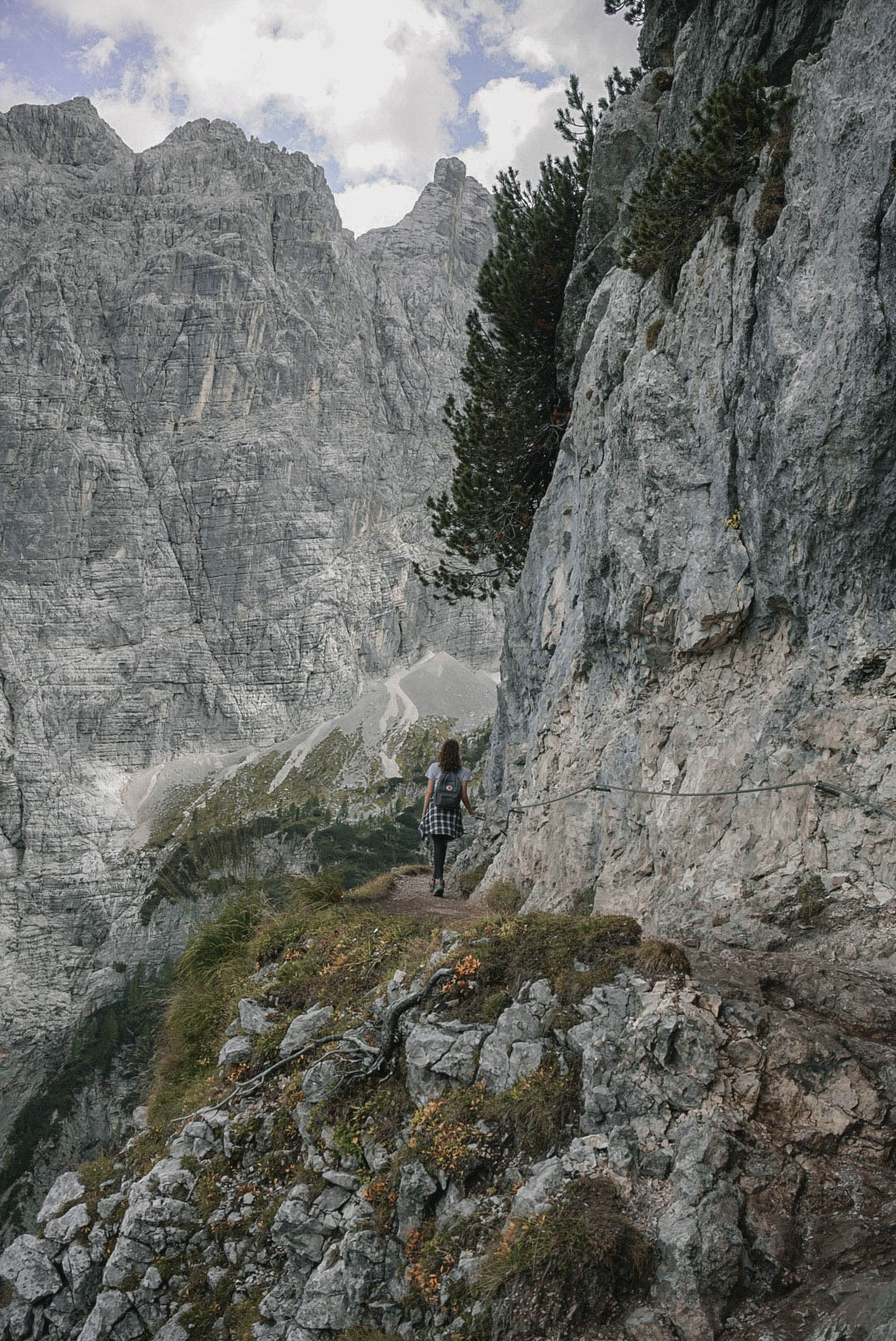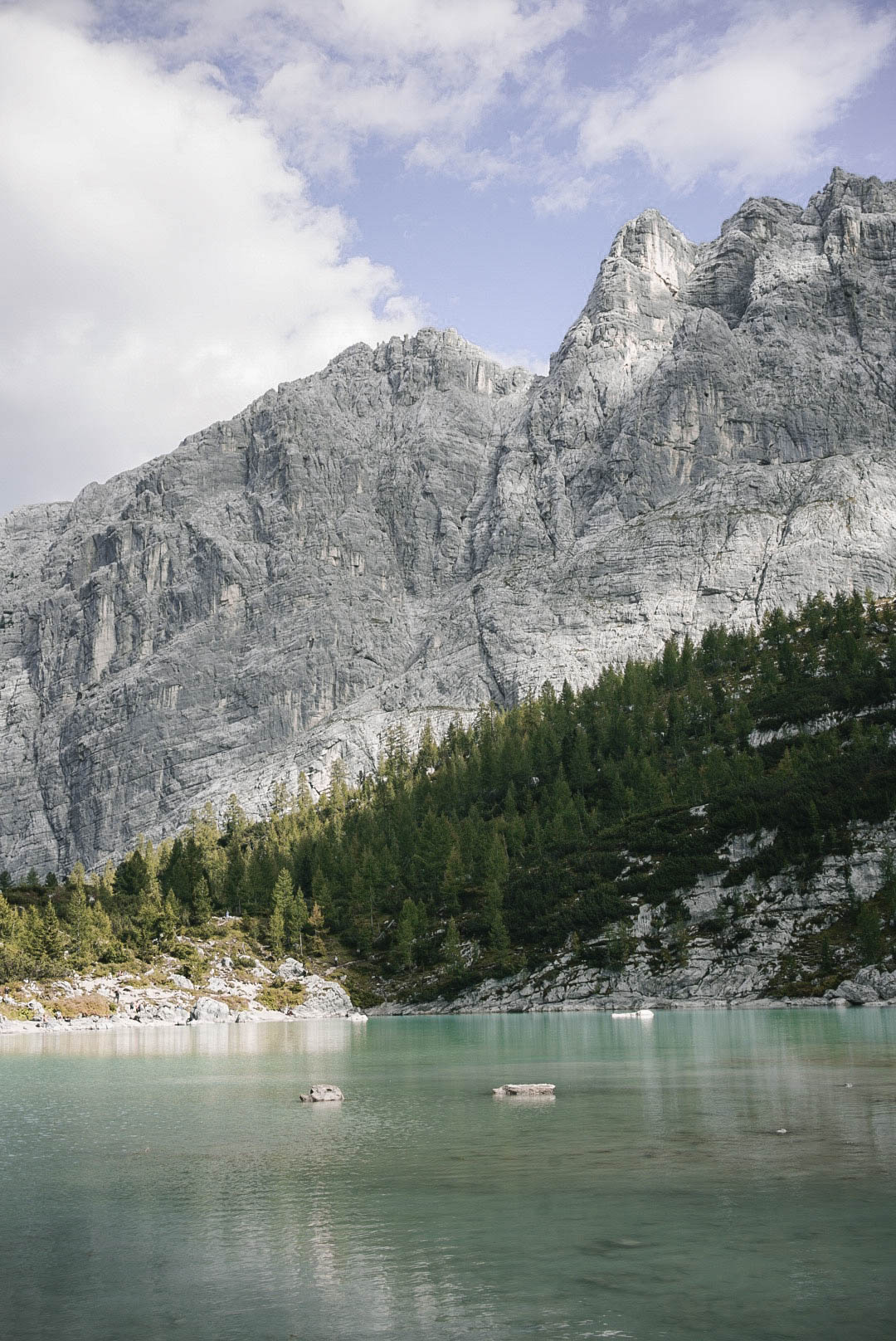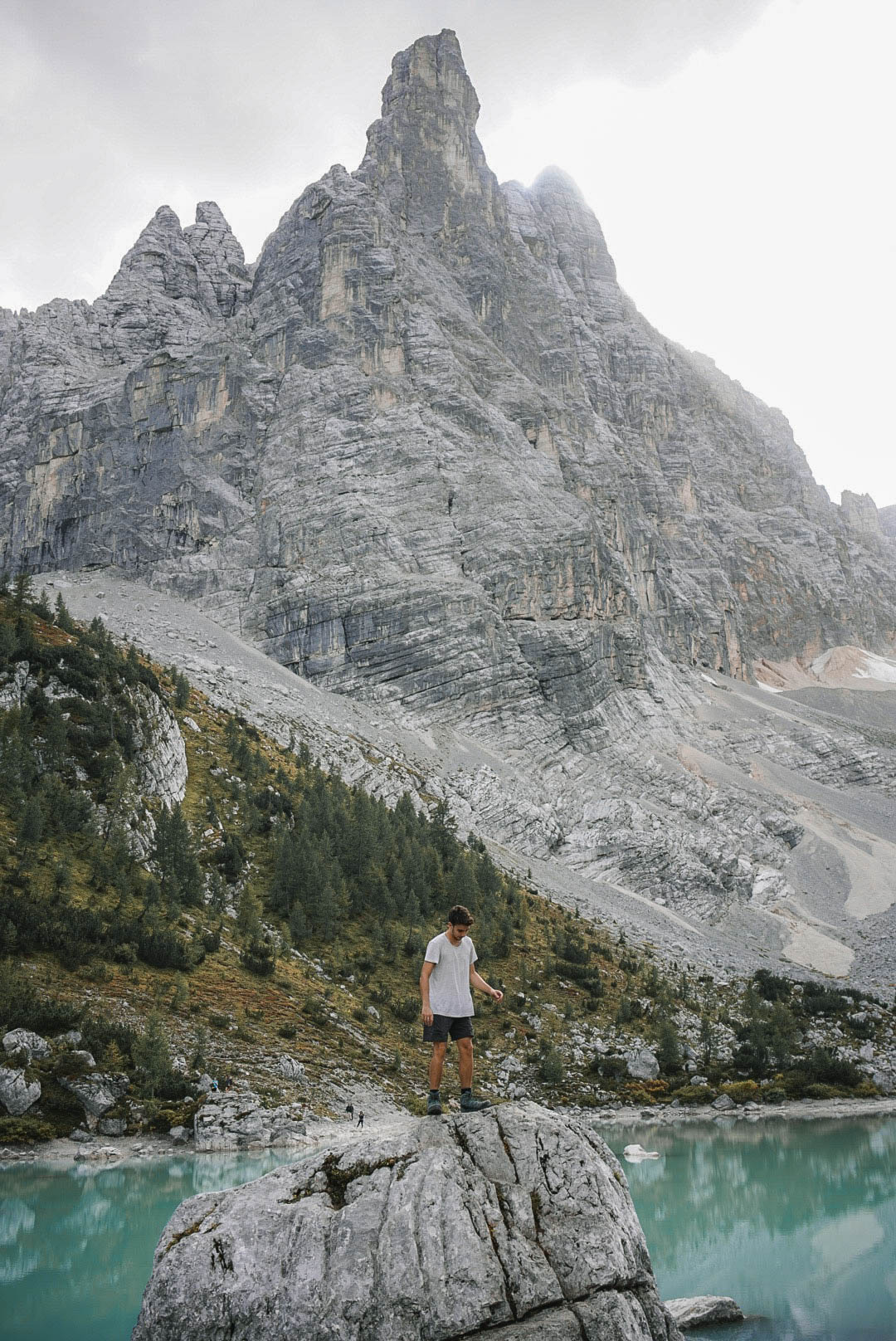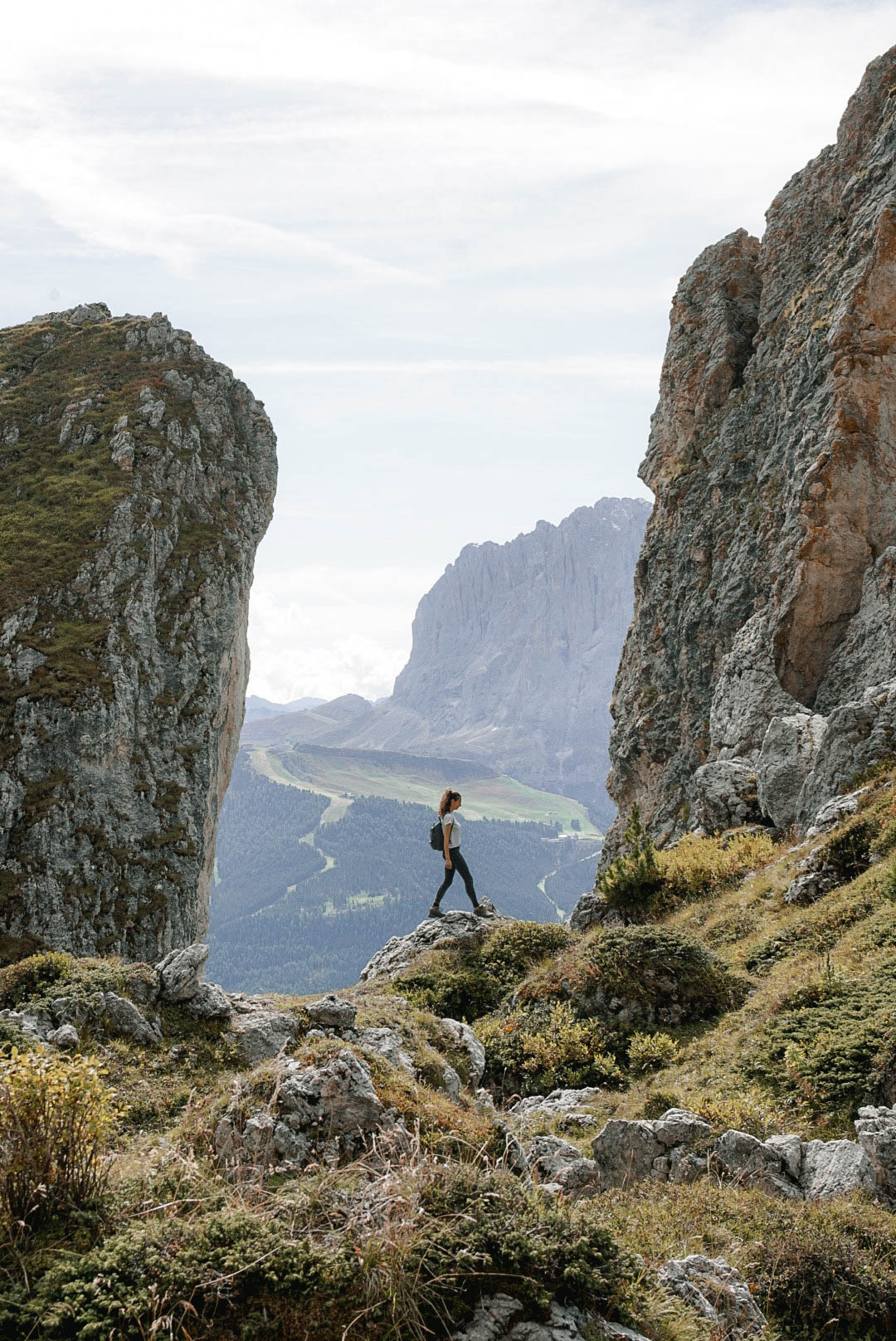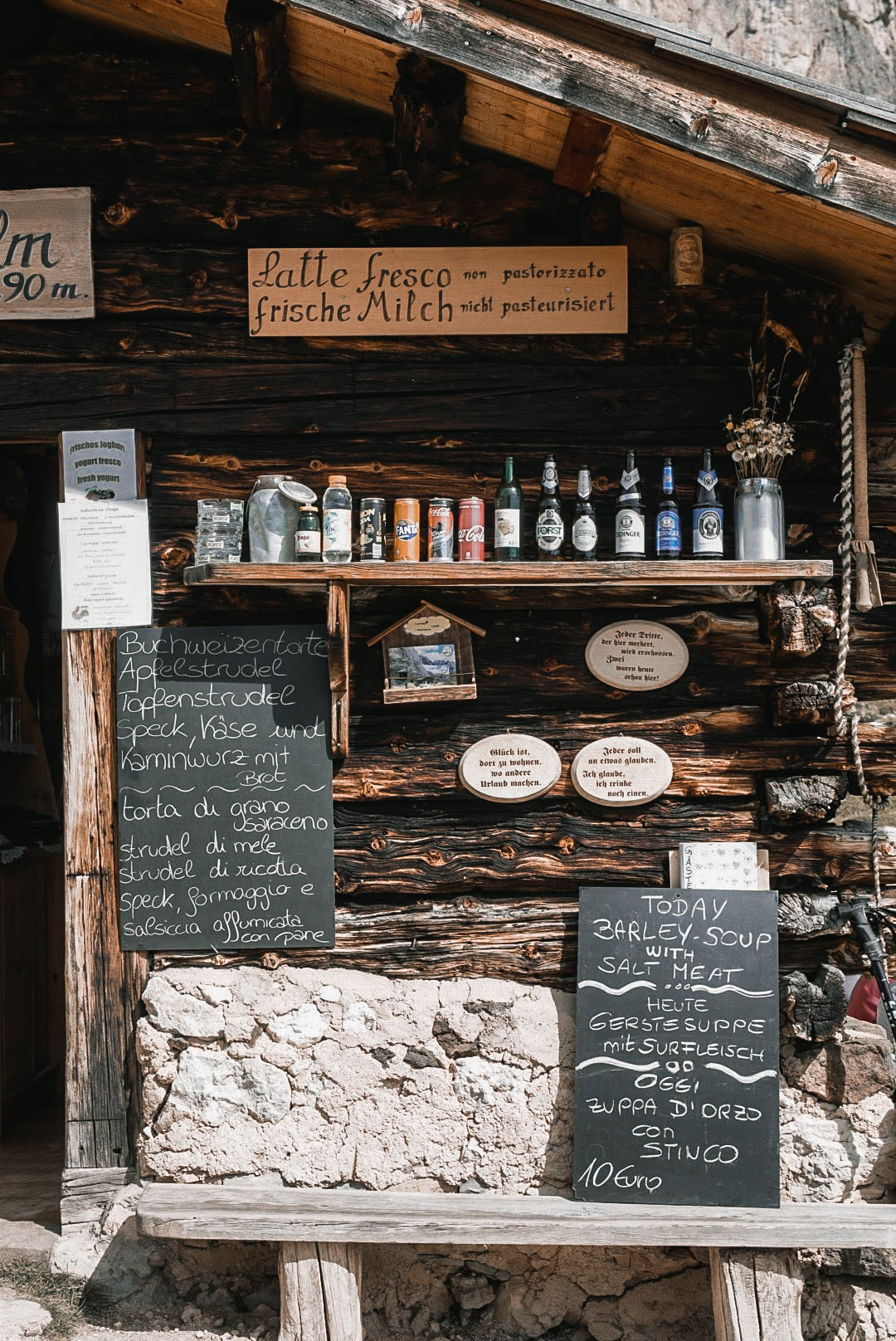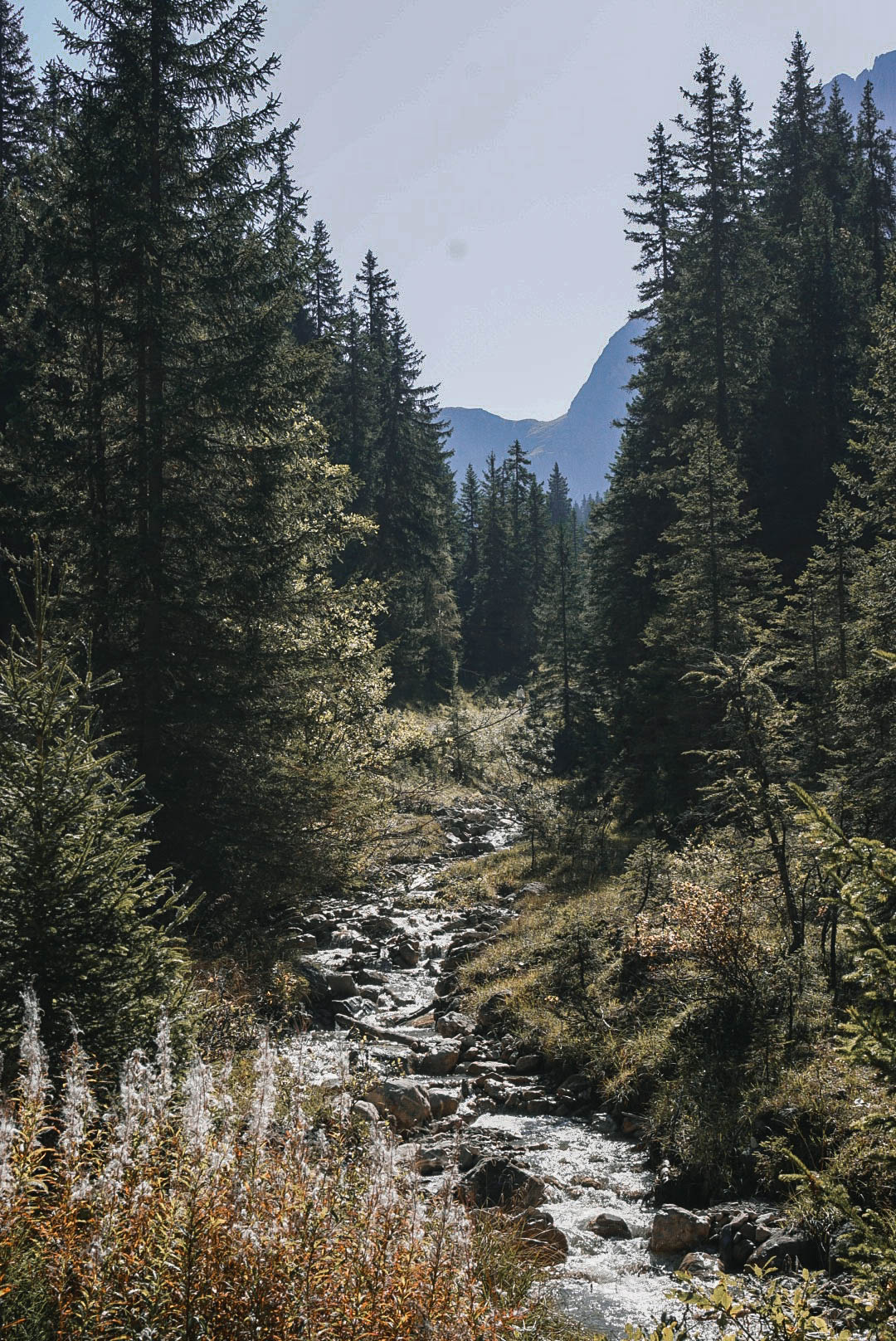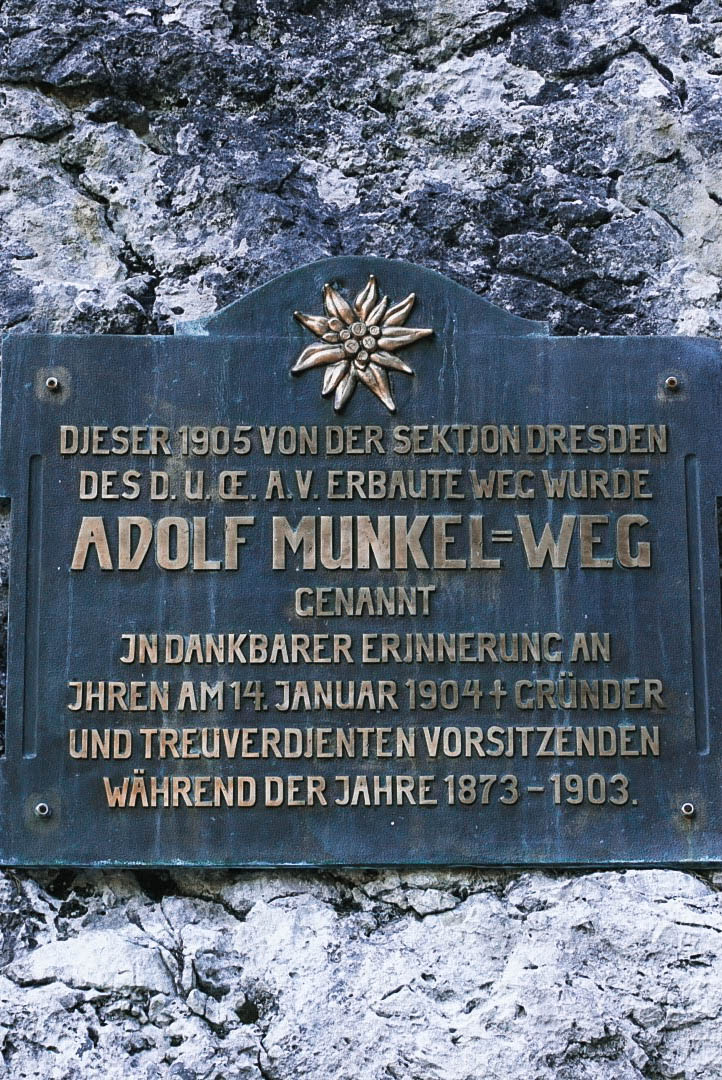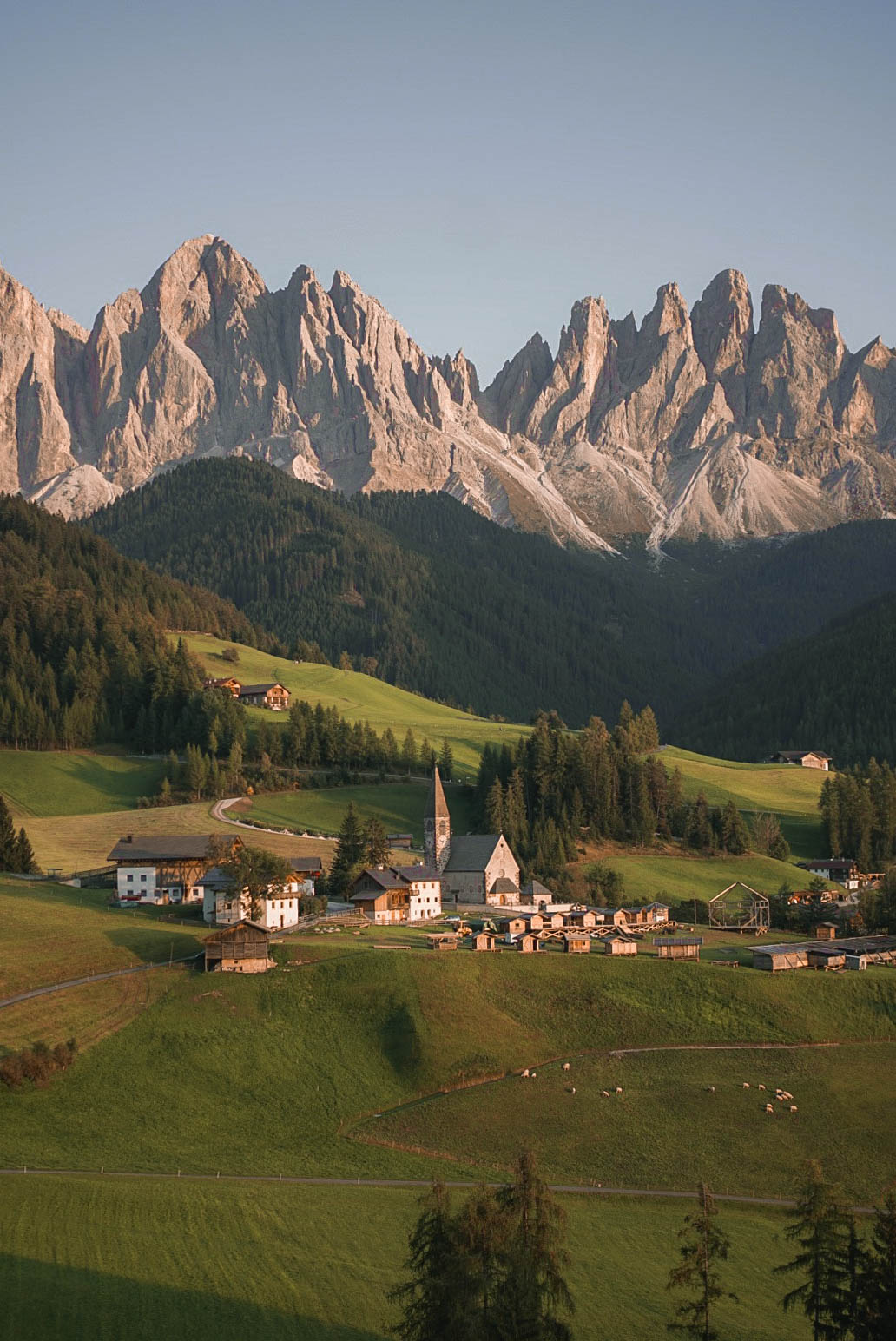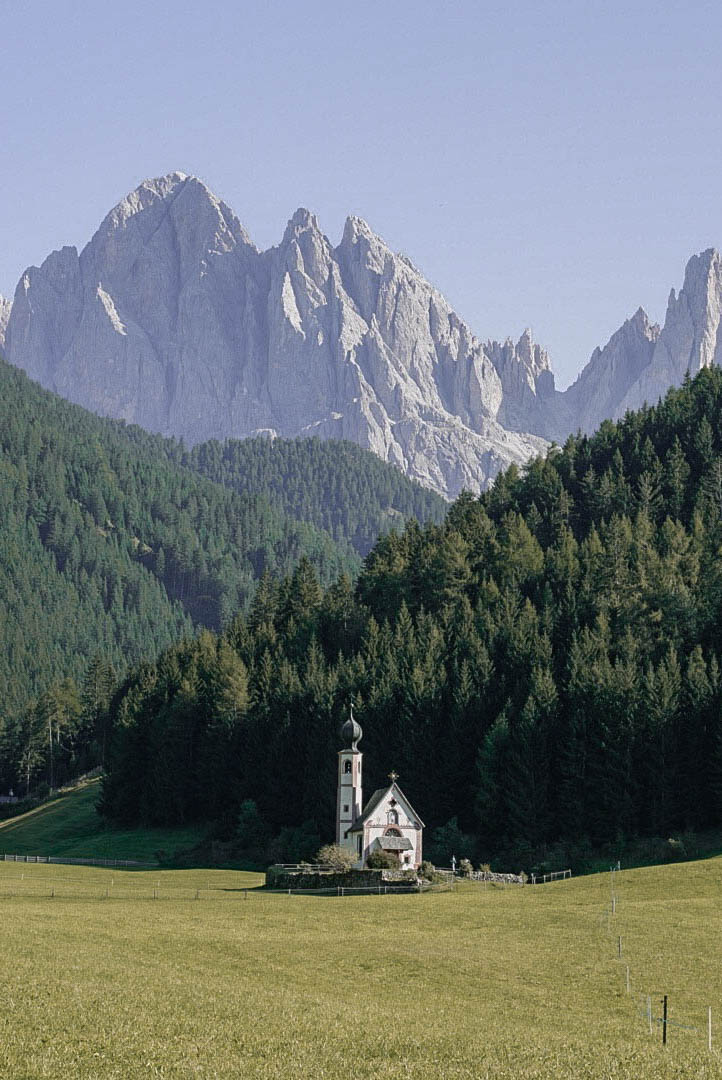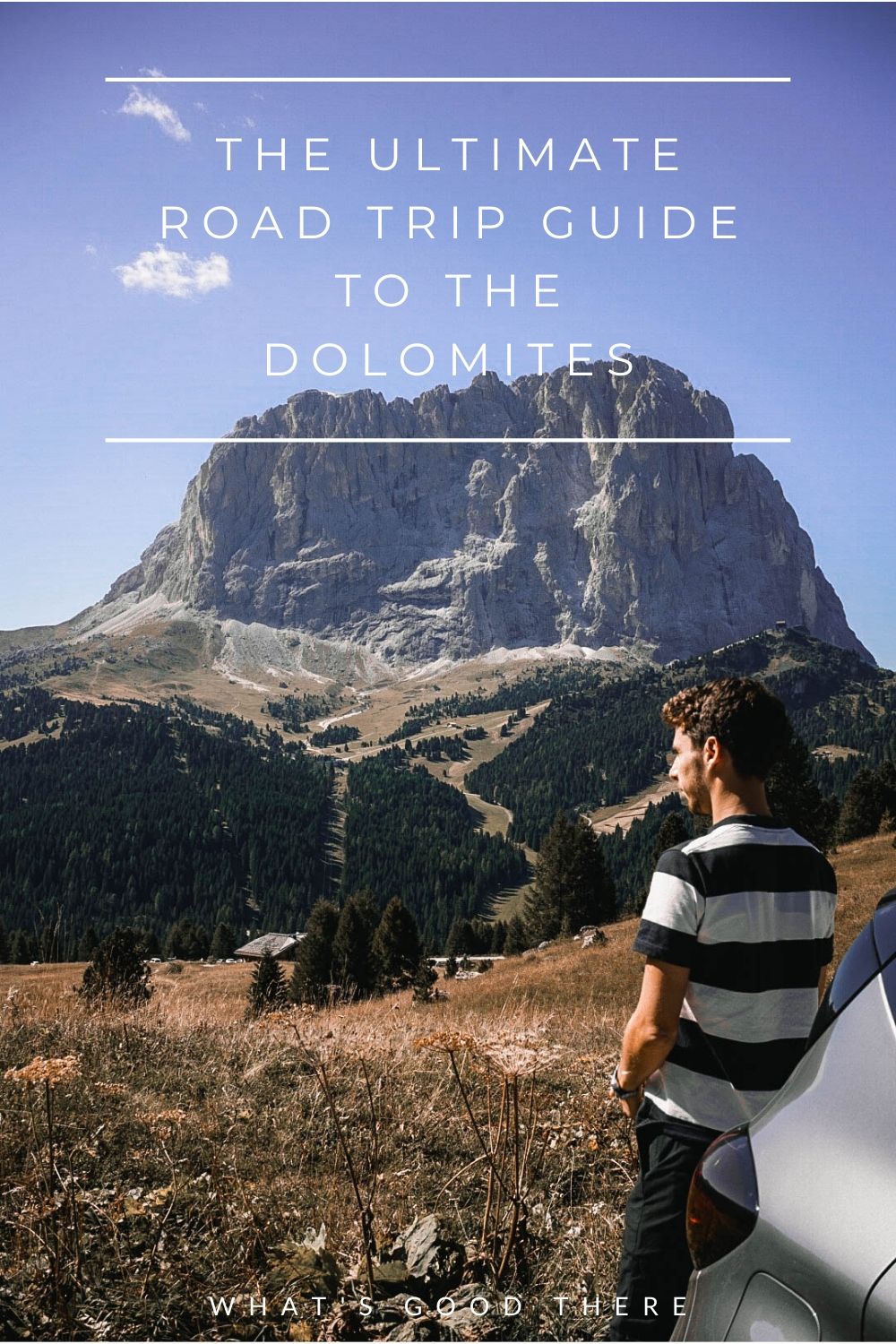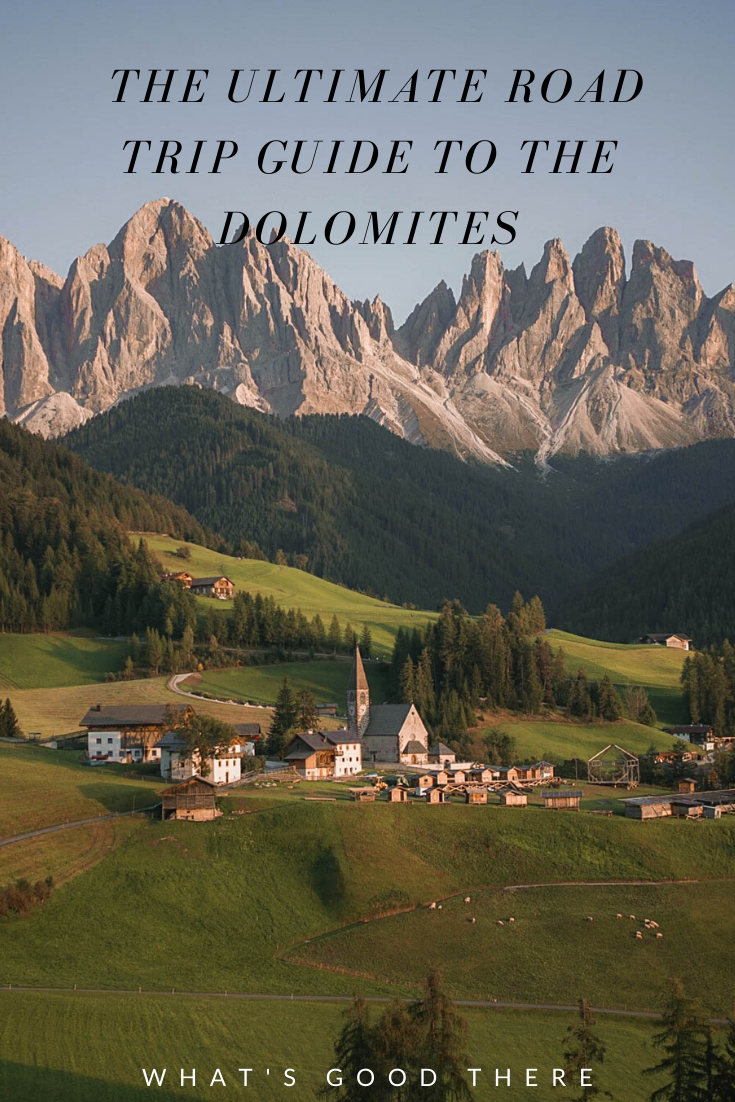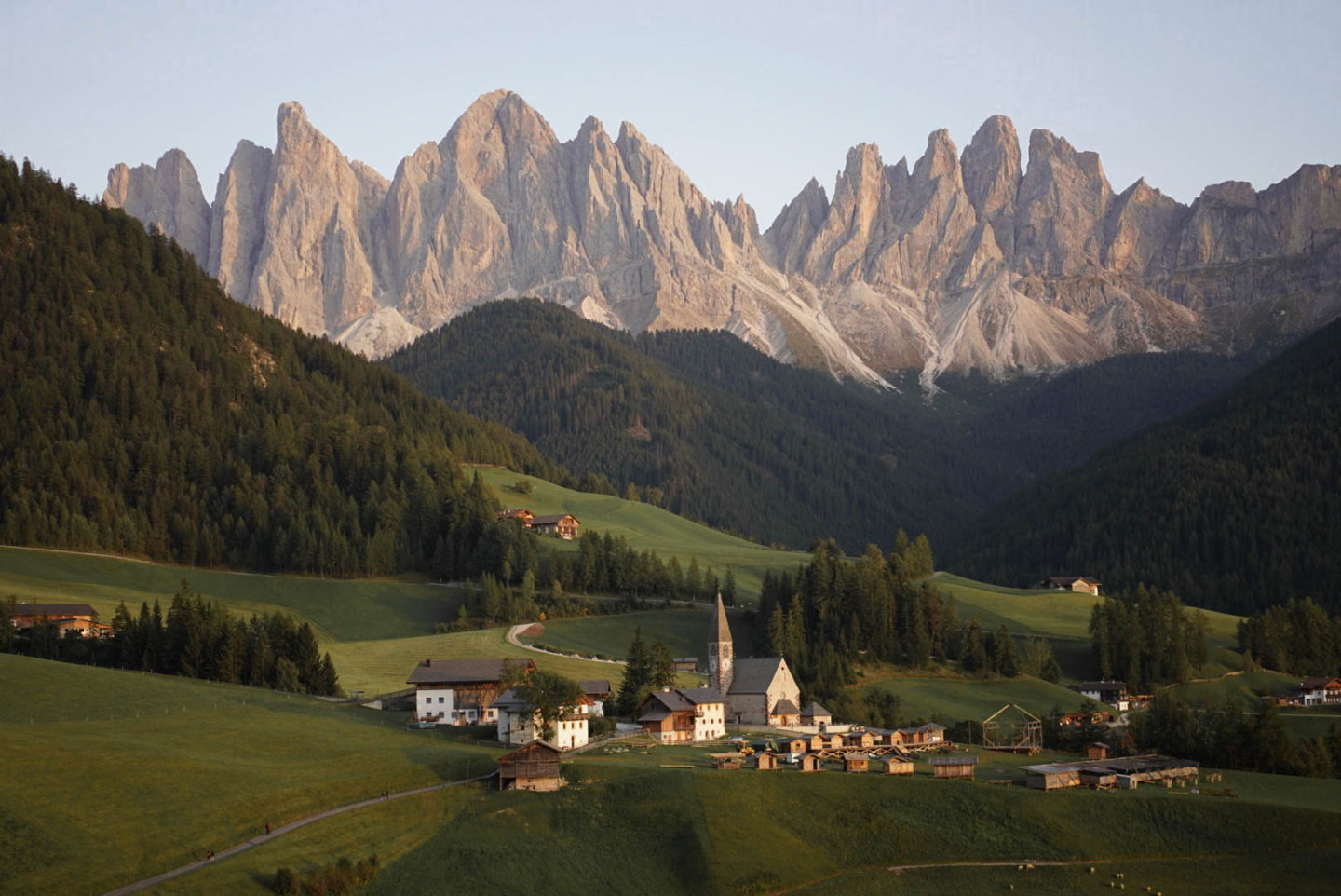
After spending seven days exploring its jagged peaks, emerald lakes, alpine meadows and picturesque towns, I’m utterly convinced that the Dolomites is one of the most beautiful places on Earth.
A nature lovers paradise, the UNESCO World Heritage listed Dolomites is where mountains and alpine scenes collide with Italian charm and a fascinating blend of Italian, German and Austrian culture to boot. Spanning the provinces of South Tyrol, Trentino, Verona and Belluno, the Dolomites is a destination like no other.
A road trip is a great way to explore the Dolomites, allowing you the flexibility to explore the region freely and make as many stops as you wish, so I’d highly recommend it. To help you explore the best of the Italian Dolomites, I’ve put together a comprehensive Dolomites road trip guide below. This guide includes all the major sites and attractions we loved, best day hikes and my personal recommendations on where to eat and stay. I’ve also included helpful tips for driving in the Dolomites, a road map and more.
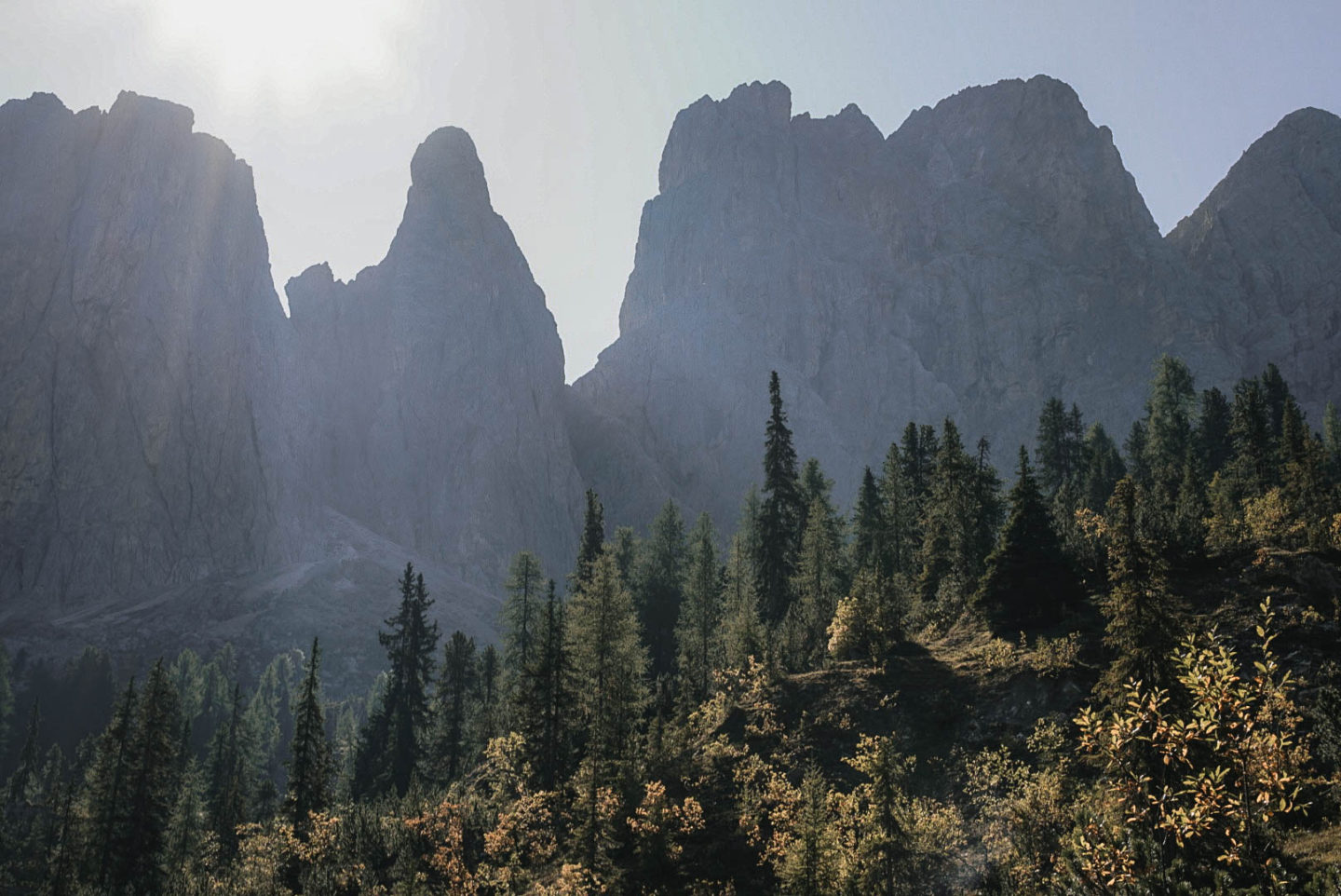
How to get to the Dolomites
Coming from the UK, we opted to fly into Venice, Italy. As you can see from the map below, we drove in a circular route around the Dolomites. You can also fly into other major airports such as Innsbruck (Austria), Munich (Germany) or Milan (Italy) – depending on where in the Dolomites you want to go.
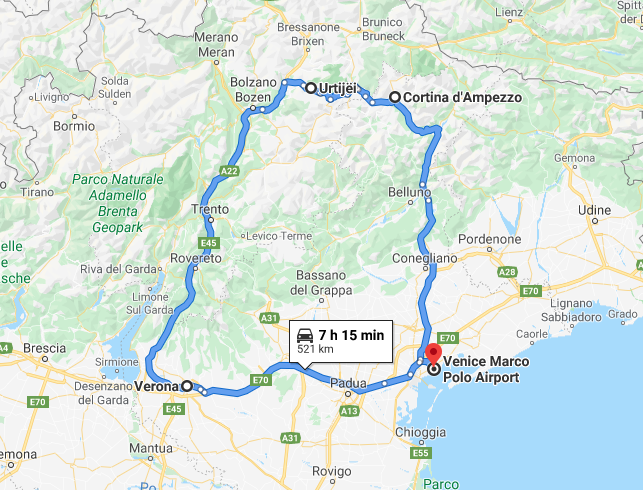
Hiring a car in the Dolomites
We picked up our rental car in Venice Marco Polo airport after we landed. Being a mountainous region, I’d recommend hiring a small four-wheel drive or SUV for the Dolomites. We booked our car via Rentalcars.com, which allows you to compare all the major car hire companies to find the best deal.
Driving in the Dolomites
It’s no secret that driving in Italy can sometimes be a little challenging, especially if you’re not used to driving on the right side of the road like us. If your licence is from outside the EU, you’ll need to bring an International Driver’s Permit to hire a car in Italy, as well as your licence and passport.
If you’re from the UK and wondering about the impact of Brexit on driving abroad, according to the gov.uk website you can still drive in Italy with a UK driving licence, insurance and vehicle documents. These driving licence rules should stay the same until 31 December 2020.
South Tyrol is an autonomous region in Northern Italy so road signs are written in German and Italian, which can make things a little tricky when navigating around. Using a GPS to navigate will make your life much easier.
Although a lot of the driving distances seem short on the map, they take a long time due to the mountain ranges. It’s all part of the fun though, with the winding mountain passes offering some of the most incredible views. Some of the roads in the Dolomites are very narrow, so take it slowly and carefully when going around corners. We also came across a couple of toll roads which we were able to pay for with card or cash.
What to know before visiting the Dolomites
- For hiking, download the free Maps.me app. Footpaths are marked in the app and can be viewed offline once downloaded.
- Straddling the border between Italy and Austria, confusingly, means pretty much everywhere in the Dolomites has two names, a German name and an Italian name, so watch out for that!
- Avoid peak season (late June to early September) when things can get crowded, especially along the most popular hiking trails. To escape the crowds, visit in May or autumn. We visited in late September.
- Italian and German are the two languages predominantly spoken.
- Always carry Euros as lots of rifugios (mountains huts/refuges) are cash only.
- You can arrange to stay overnight in one of the dozens of rifugios, and then hike from hut to hut. Be sure to call well in advance for enquiries as they book up fast.
- The Dolomites is an excellent ‘budget-friendly’ option in the Alps, compared to other places in the Alps and western Europe.
- Although a car is the easiest way to get around, it’s not essential. In the summer season, there are dozens of bus routes connecting major villages and key hiking spots.
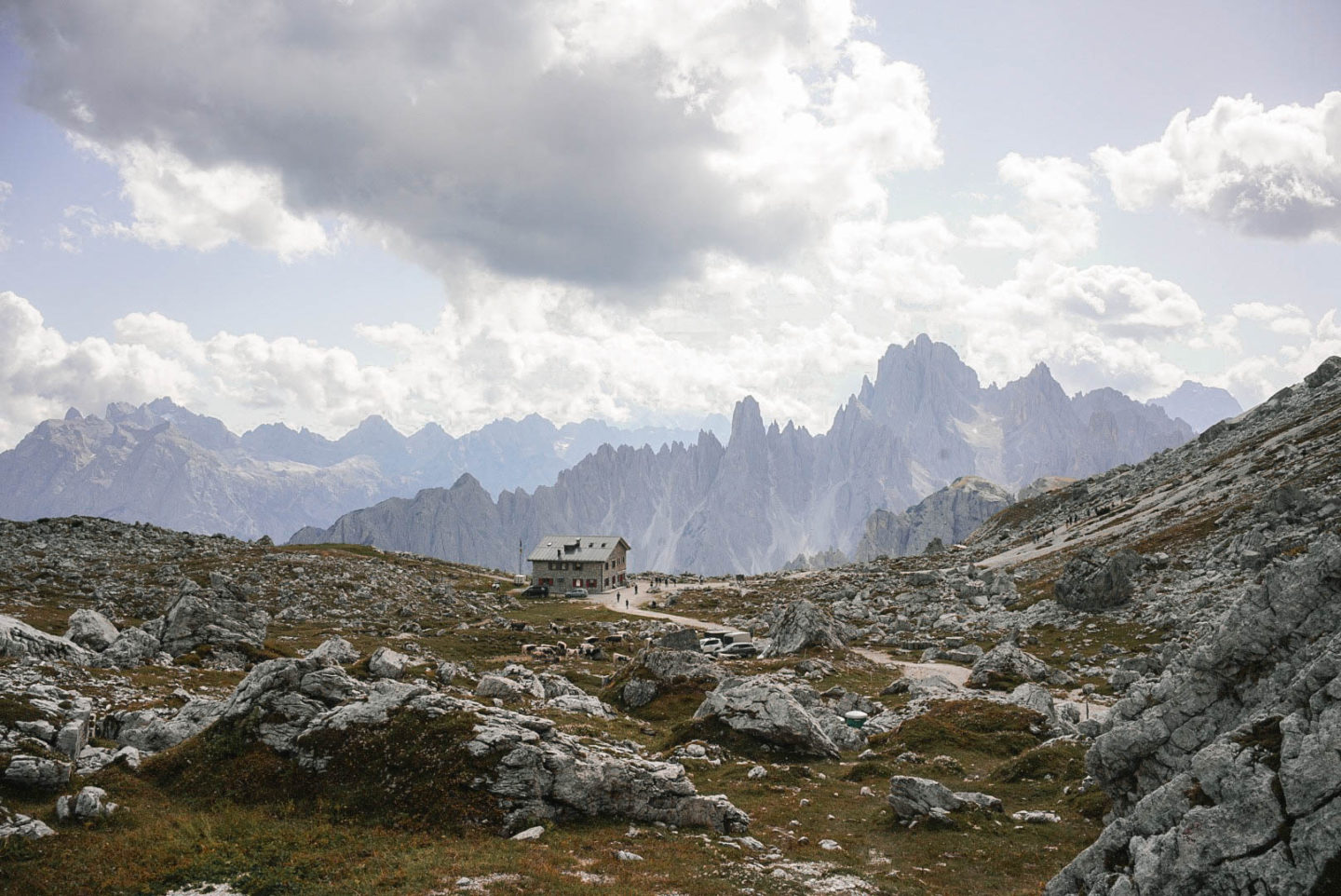
Where to stay in the Dolomites
We chose to split our time between two towns, with 3 nights in Cortina d’Ampezzo and 4 nights in Ortisei/Urtijëi (with one final night in Verona before flying home). Overall, I think this was a good allocation of time and the only main change I would make would be to experience staying overnight in a rifugio. I’ve also heard good things about Bolzano, the charming provincial capital of South Tyrol, which we didn’t visit but is by all accounts a great place to spend a few days.
From Cortina d’Ampezzo and Ortisei, most sites and hikes were only 45 minutes – 1 hour away, so these two towns served us well as bases to come home to each night.
In Cortina d’Ampezzo, we booked into an Airbnb for 3 nights that was close to the centre of town. You can browse other accommodation options below:
Booking.comIn Ortisei, we stayed in Garni August for 4 nights, a pristine and incredibly charming guest house nestled on the slopes, a short walk away from the main shops and restaurants. Peruse all other Ortisei hotel options below:
Booking.comRoad Trip Highlights in the Dolomites – From Cortina d’Ampezzo
Below are my top picks of things to see and do from Cortina d’Ampezzo.
The town of Cortina d’Ampezzo
The beautiful ski resort of Cortina d’Ampezzo is a great summertime base for exploring the Dolomites. Famous for hosting the 1956 Winter Olympics, the town is now home to some seriously world-class cuisine. If you’re splashing out, I’d recommend a meal at SanBrite for a contemporary take on mountain dishes. This beautiful, intimate restaurant is framed by magnificent mountains and offers an exceptional dining experience. For a mid-budget option, Il Vizietto is a local gem, unassumingly tucked away just off the main street. We enjoyed the food so much we dined here twice, and the atmosphere was incredibly warm and friendly. A really good value dining option we found was Ristorante Pizzeria Ariston.
Tre Cime di Lavaredo
The Tre Cime Lavaredo loop trail is one of the Dolomites most iconic and beautiful day hikes. Winding through jagged limestone mountains, a trip to the Dolomites would not be complete without seeing the three peaks of Lavaredo in all their rugged glory. Starting at Rifugio Auronzo, the loop is an easy/moderate hike that should take around 3-4 hours to complete. This popular route is well signposted and marked on Maps.me.
Throughout the loop, there are numerous picturesque mountain refuges where you can stop for lunch or a well-earned beer on the way. To get to Tre Cime di Lavaredo via car, you’ll be required to pay the toll/ entrance fee of €30. I’d recommend getting to the park early to allow plenty of time to explore. Opening hours are 7 am – 7 pm.
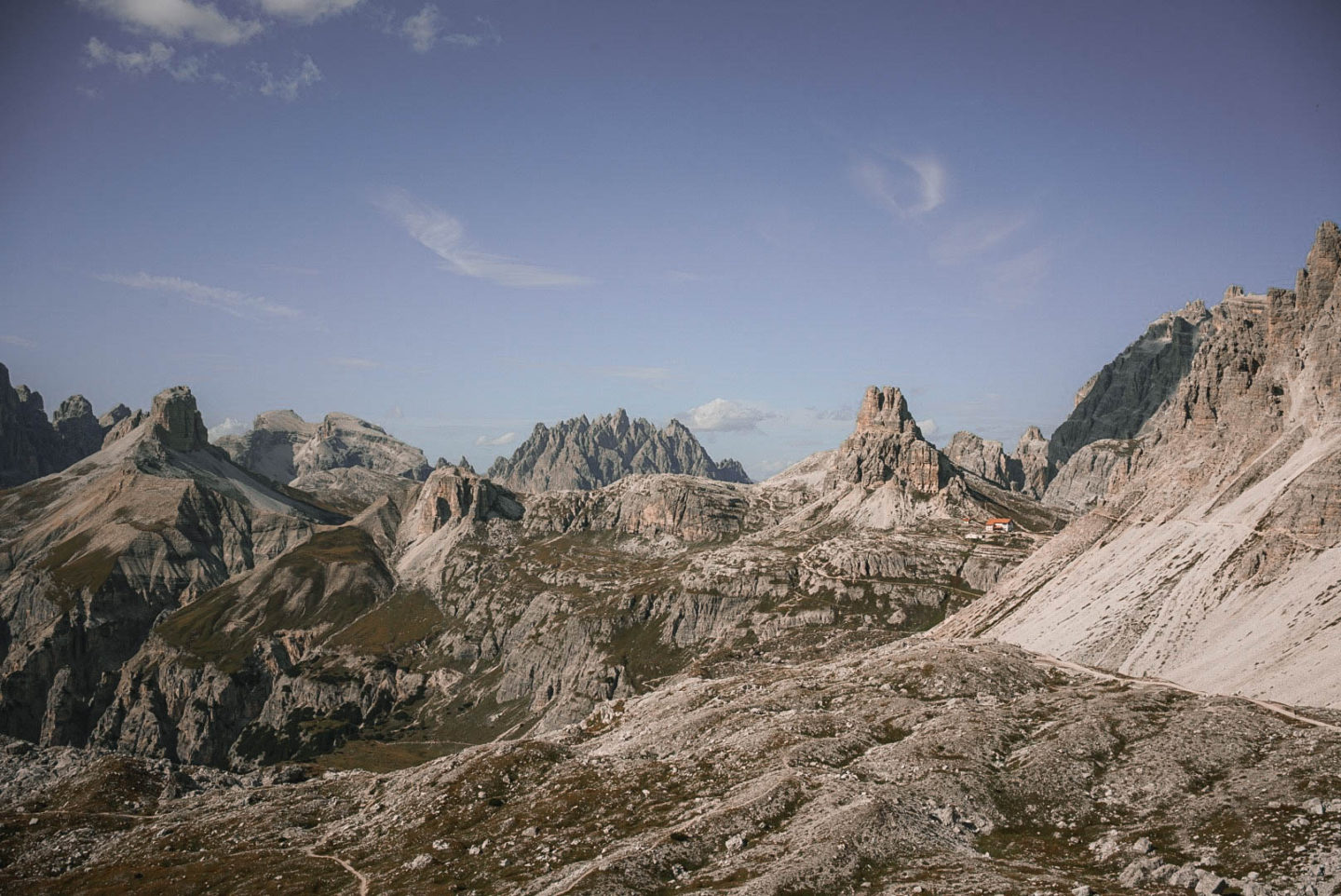
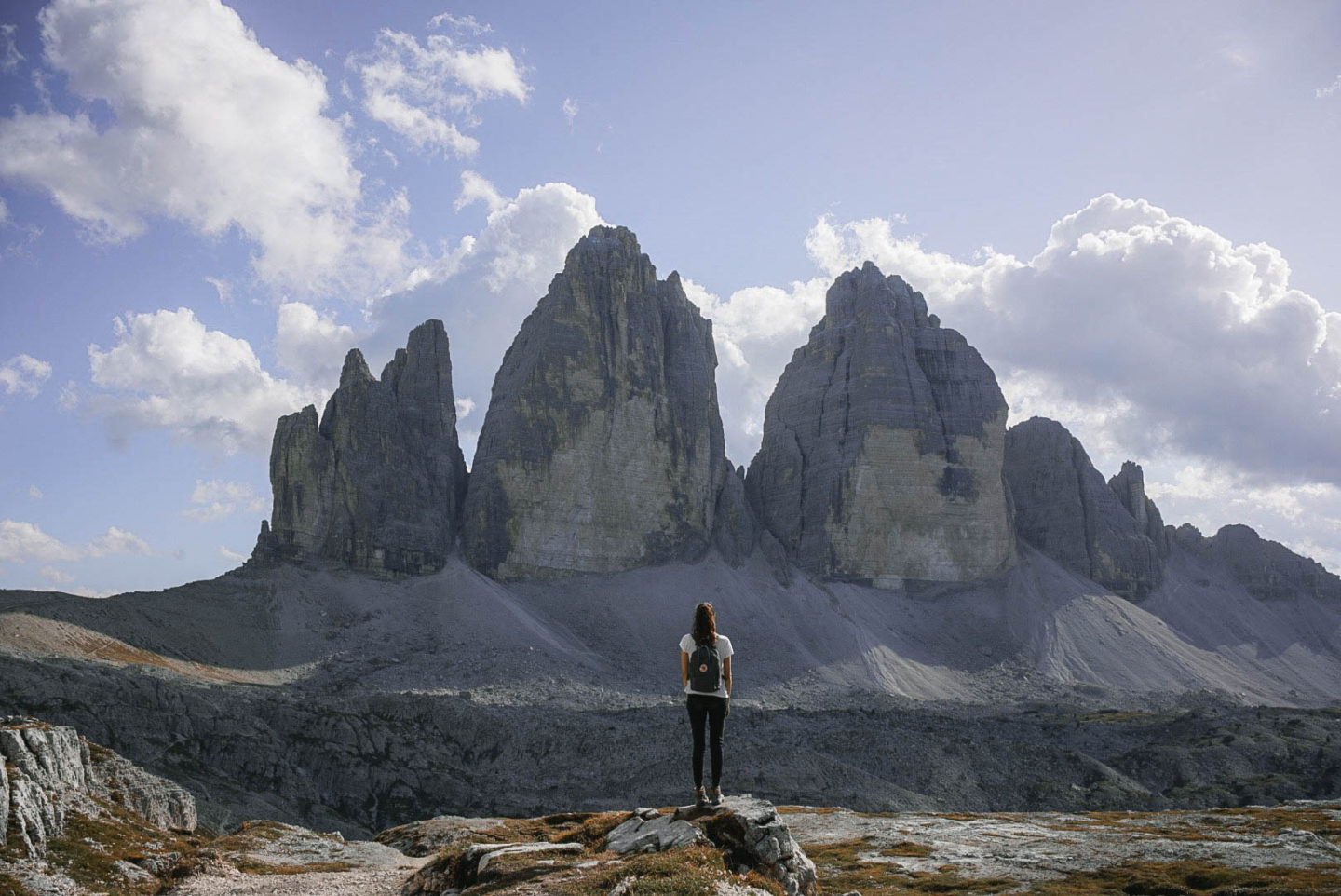
Lago di Scorapis
The only way to reach the shimmering turquoise waters of Lago di Scorapis is to hike. This challenging mountain trail was one of my favourite walks in the Dolomites. Starting at Passo Tre Croci, near the Son Zuogo parking area, the hike is a good 4 hours round trip (not including stops) and fully marked on Maps.me.
The walk begins in a dewy meadow, then weaves gently uphill through pine trees and across the occasional river. Gaps in the dense foliage offer glimpses of the rugged cliff line and Tre Cime di Lavaredo in the distance. Emerging from the forest, the ascent clings tightly to a narrow cliff ledge, with metal stairs, ladders and cables to traverse. If you’re not a fan of heights, you may find this a little unnerving in places. After clambering over more uneven rocky terrain, the trail meanders back into the refuge of the forest. And then, as you reach the top, the mesmerising blue of Lago di Scorapis, nestled under imposing mountains, is revealed.
Lago di Braies
Famous for its shimmering water, insta-famous boathouse, beautiful spruce pine forests and towering limestone peaks, Lago di Braies is the most iconic alpine lake in the Dolomites. It’s a beautiful place to catch the sunrise and I highly recommend getting here early because it can get very crowded. To avoid the masses, take the picturesque 1 hour walk which traces the shores of the lake. A large parking lot is located nearby costing €8 per day.
On the drive back, we stumbled by Gastof Tuscherhof on the main road where we stopped in for a hearty al-fresco lunch. It’s a family-run hotel and restaurant with a lovely terrace and panoramic mountain views.
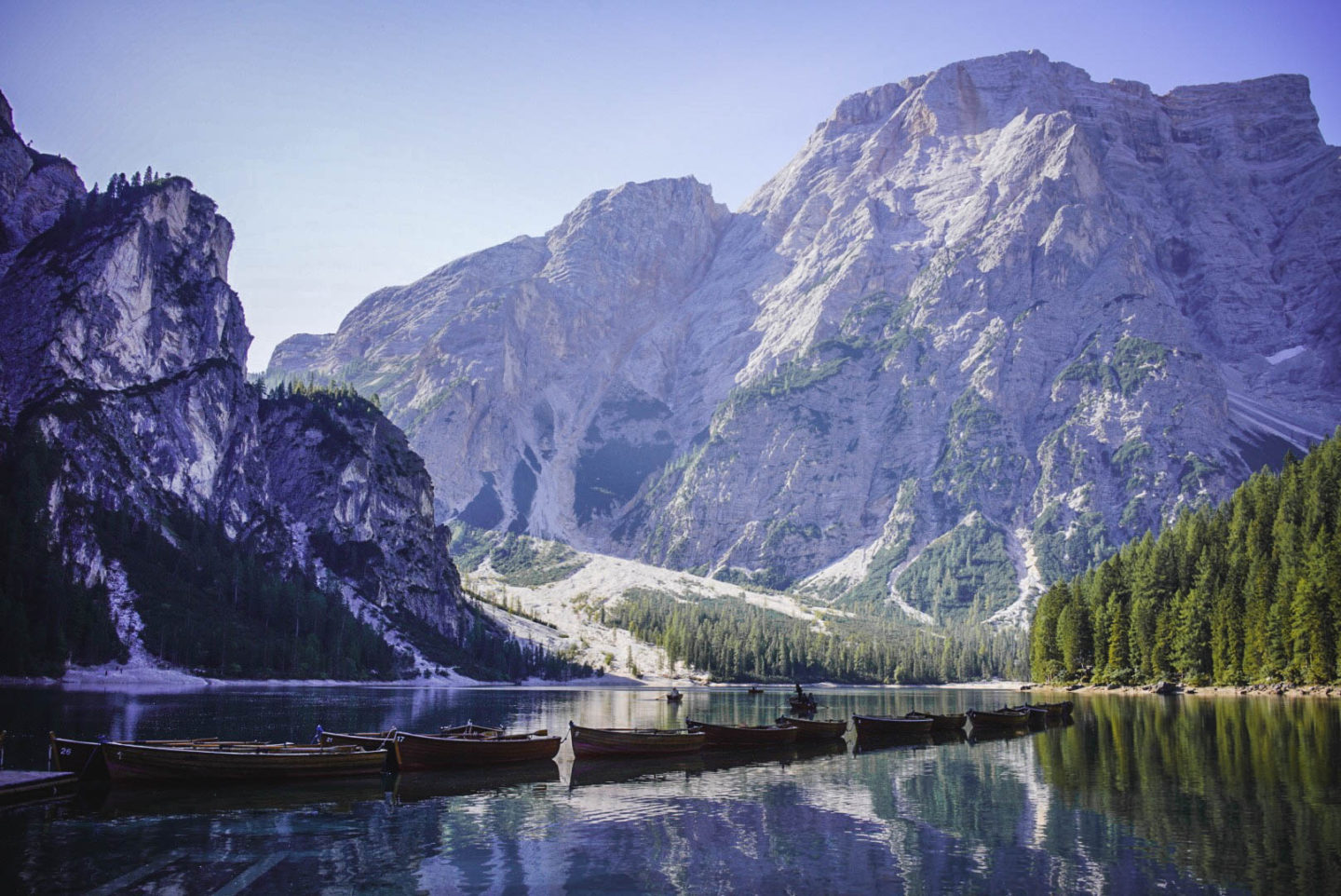
Road Trip Highlights in the Dolomites – From Ortisei
Less than 2 hours drive from Cortina d’Ampezzo, is the picturesque village of Ortisei. The main village in the valley, it boasts a charming centre with lots of shops, cafes and restaurants. Our favourite place for dinner we found was Vives. Below are my top picks of things to see and do from Ortisei.
Gardena Pass
On route to Ortisei, make sure you drive Passo Gardena, one of the Dolomites most impressive scenic roads. At an elevation of 2,136m above sea level, it connects the valleys of Gardena and Badia. This epic mountain pass offers dramatic scenery, views of the Sassolungo peaks, and the perfect opportunity to master South Tyrol’s notorious hairpin bends.
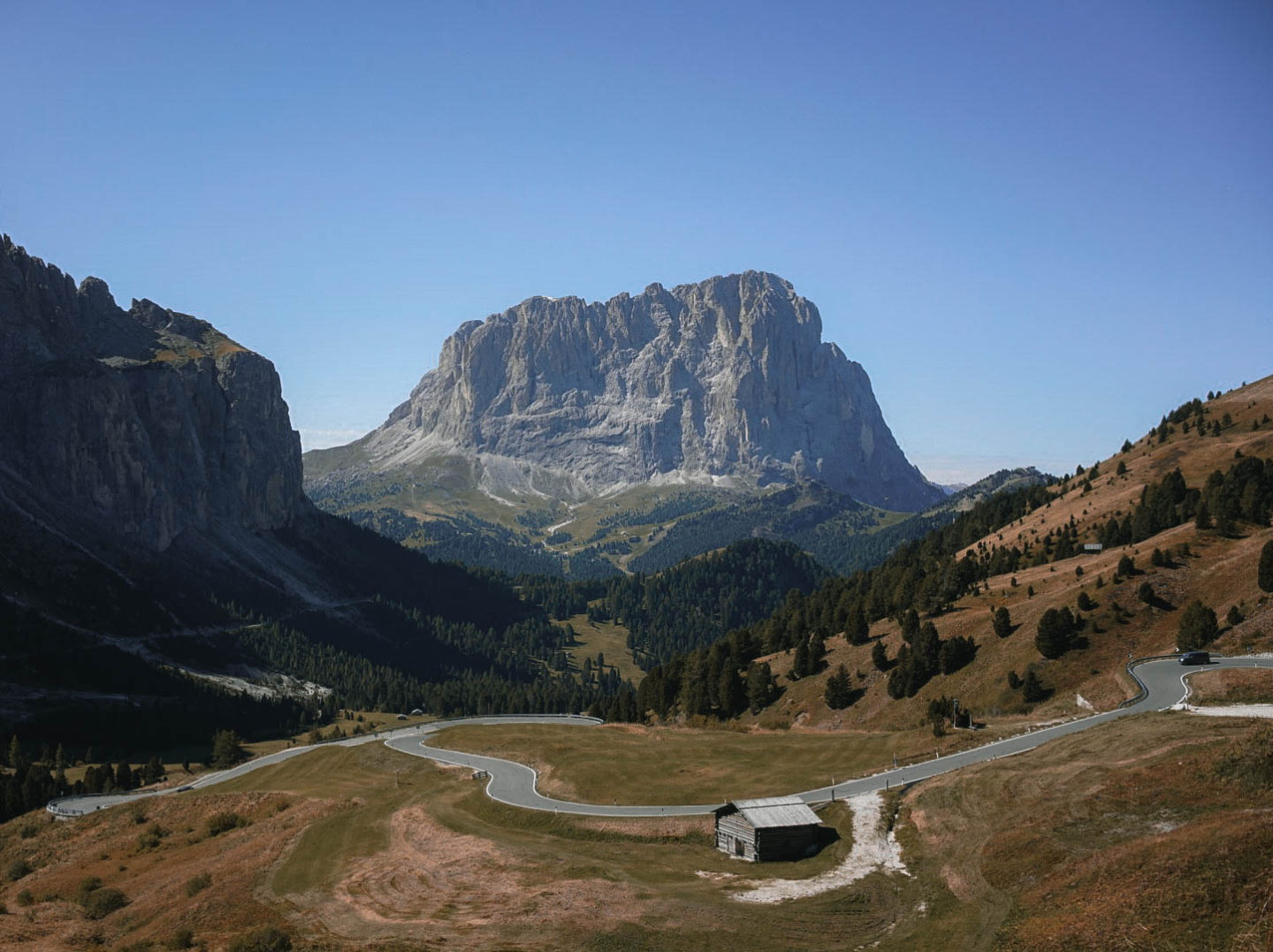
Seceda to Wolkenstein hike
Towering at 2500 m, the Seceda ridgeline is one of the most famous views in the Dolomites, and a must visit on any Dolomites itinerary. To get to the epic vantage point, take the cable car from Ortisei to the top of Seceda (€22 one way) and follow the signs for trail no 1. The views from the top are simply stunning, overlooking the velvety green of Val Gardena and many of the Dolomites’ famous peaks including the Fermeda Towers, Sella group, Sassolungo and Mt. Schlern. There are a number of huts dotted around that are perfect for enjoying a morning coffee in the sun.
Once you’ve soaked in the photogenic scenes of the Fermeda Towers, instead of catching the Gondola back down, I’d recommend hiking to the village of Wolkenstein. This 12 km walk funnels down into the valley following the gentle slopes, past quaint log cabins, striking rock formations, free roaming donkeys and through leafy forest, eventually leading you to into the tranquil backstreets of Wolkenstein. On the way down you will pass various rifugios including Troier, Pieralongia and then Firenze where we stopped for lunch with beautiful views over the mountains.
The hike itself is 12 km and takes 3 to 4 hours. To return, take one of the regular buses that run from Wolkenstein-Nivesplatz and Ortisei, costing €1.50 or free with a Val Gardena Mobil Card.
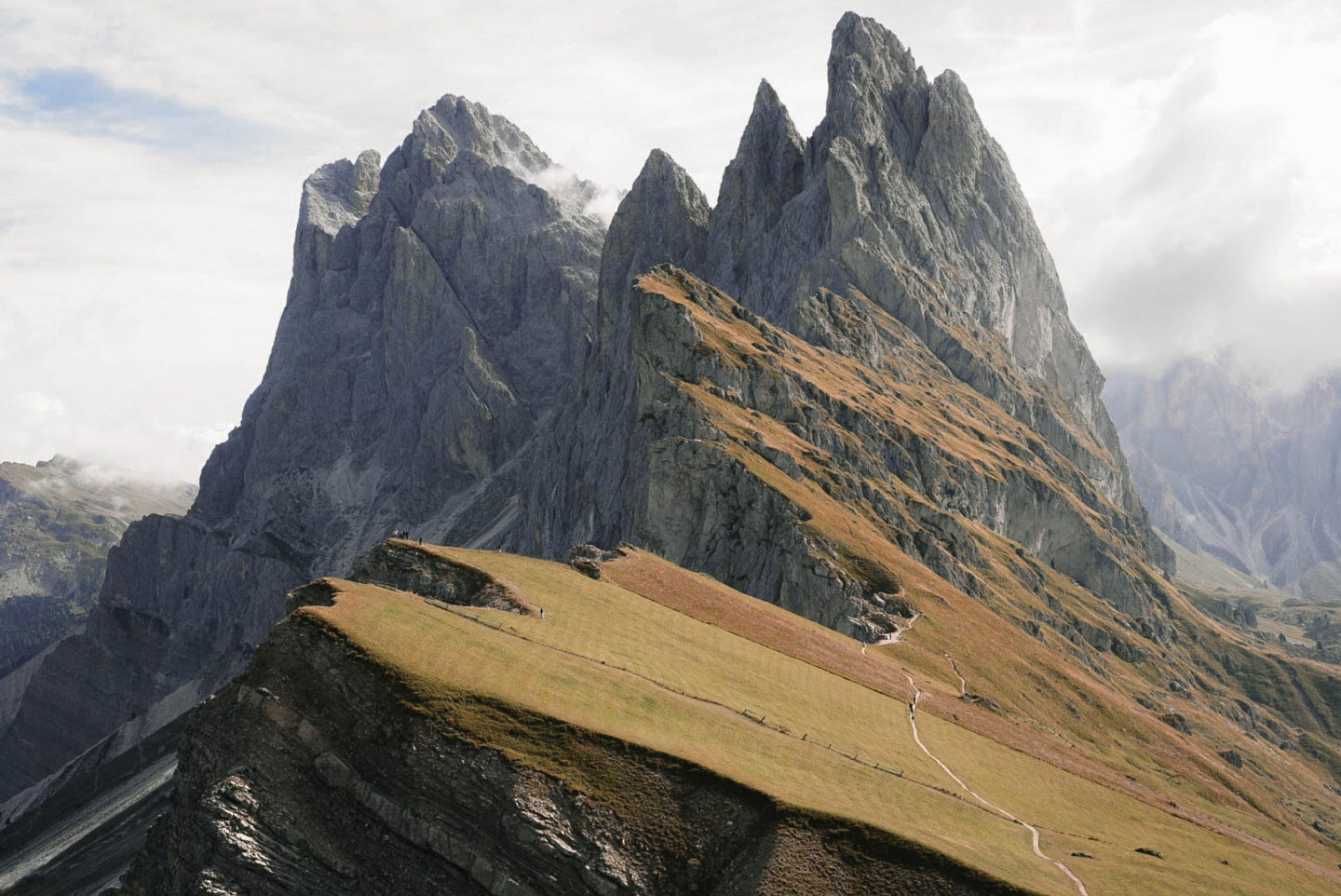
Alpe di Siusi
The beautiful rolling hillsides of Alpe di Siusi (also known as Seiser Alm) are not to be missed. Home to the iconic views of undulating meadows dotted with cute cabins, it’s the largest alpine meadow in Europe and breathtakingly beautiful. Make sure you get there for sunrise and soak in the magic.
After enjoying one of the most incredible sunrises of your life, pick your jaw off the floor and head to Malga Sanon for an incredible breakfast in a beautifully rustic mountain hut. Here you can try Tyrolean Kaiserschmarrn, or ‘emperor’s mess’, a delightfully fluffy and light sweet pancake, torn into bite-size pieces, served with powdered sugar and compote. Spend the rest of the day hiking around the valley on one of the many trails in the area.
How to get to Alpe di Siusi | It’s important to note, driving into Alpe di Siusi is prohibited unless you’re staying at one of the hotels in there (there’s a hefty €150+ fine if you do), so I suggest parking at Compatsch parking lot P2 and walking to the meadow from there. Make sure you get to the parking lot before 9 am (the road closes to new arrivals from 9 am till 5 pm). Parking costs €17 euros per day and the parking booth opens at 8 am. If you arrive before, it’s likely you won’t have to pay. The popular sunrise photography spots are near to the Adler Lodge (don’t just type Alpe di Siusi into Google Maps, it’ll drop you in the wrong place). If you’re keen not to have an early start, alternatively, you can take the cable car directly from Ortisei to begin your hike (€18 round trip).
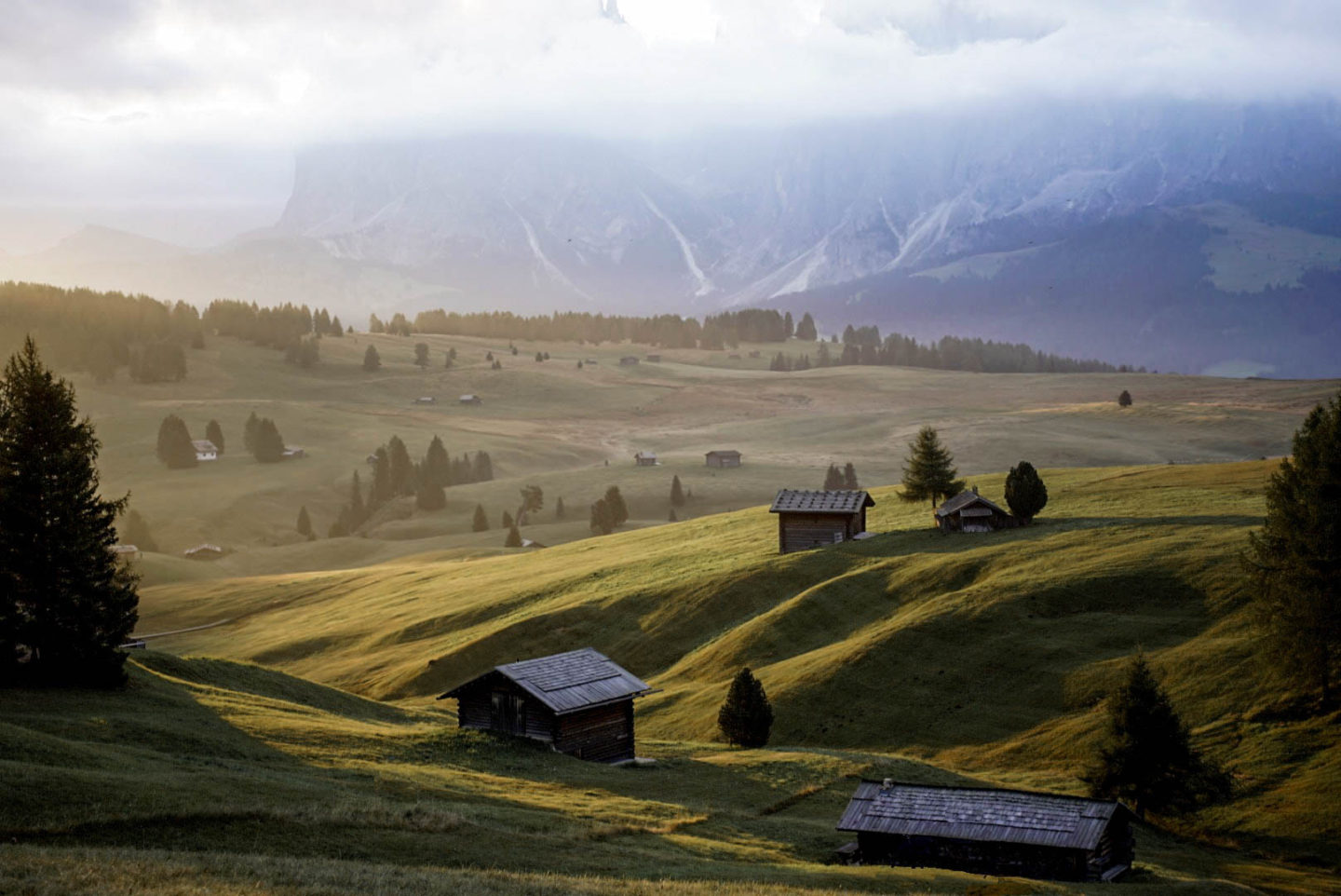
Lago di Carezza
Another unmissable lake for your itinerary is the incredible emerald waters of Lago di Carezza. We visited in the afternoon and the lake looked stunning. Early morning just before sunrise is also a great time to go as you will see the sun as it hits the limestone peaks of the Latemar mountain range behind. Afterwards, take the short walk around the edge of the lake, enjoying the fresh mountain air and tranquil surroundings. There’s something incredibly enchanting about this lake, with its mesmerising jewel toned reflections and misty spruce forest surrounding it.
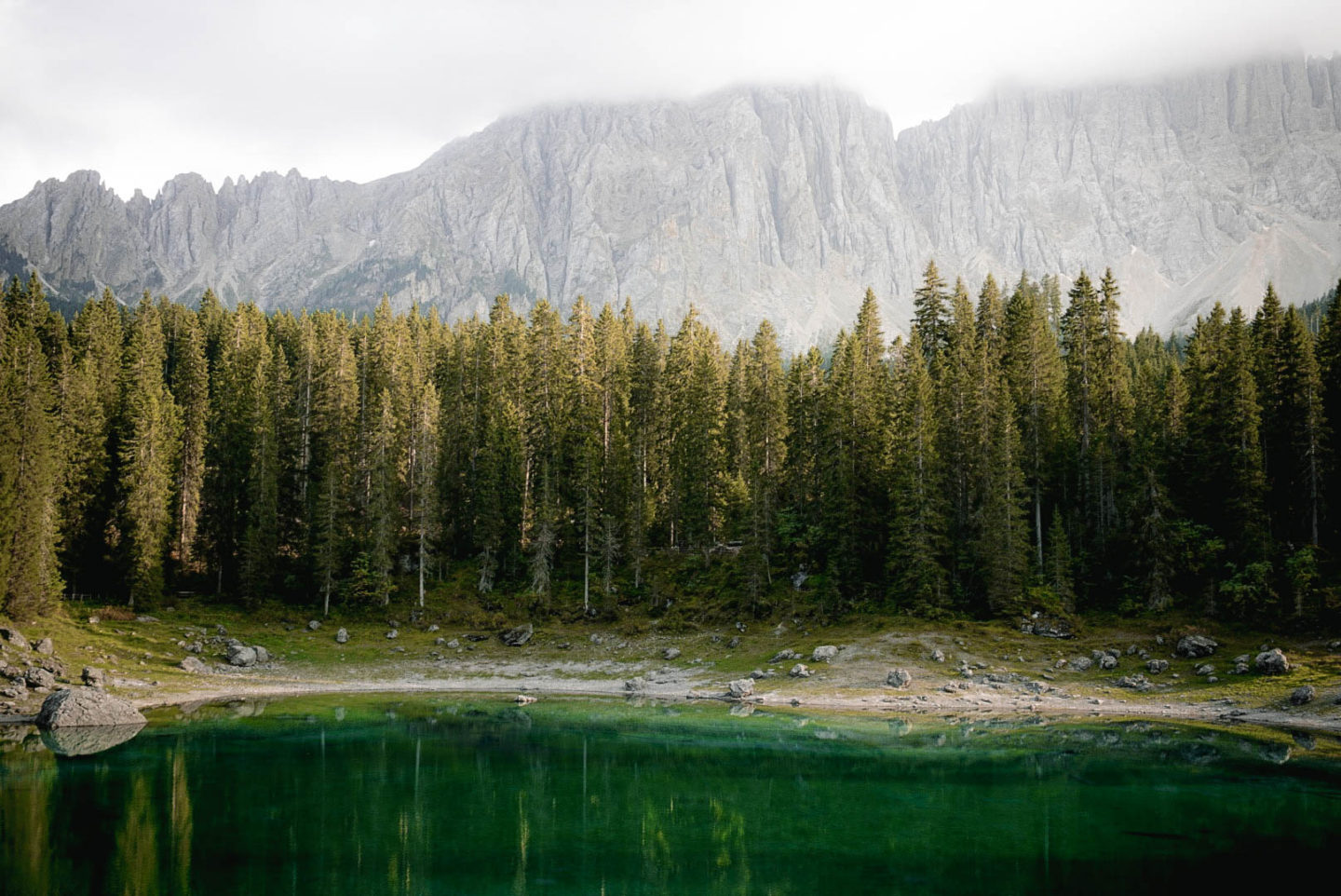
Val di Funes – Adolf Munkel Trail Hike
We set aside a full day to explore Val di Funes, an absolutely gorgeous valley in the Dolomites. The first half of the day was spent on foot, hiking the circular Adolf Munkel Trail. Starting in the Zanser Alm parking area, the moderate 13 km trail takes around 3.5 hours to complete, tracing beneath the majestic Odle/Geisler mountain group. Expect wonderful mountain views, varied terrain and lovely mountain huts serving drinks and meals along the way. You can drive directly to the trailhead and park there for €5.
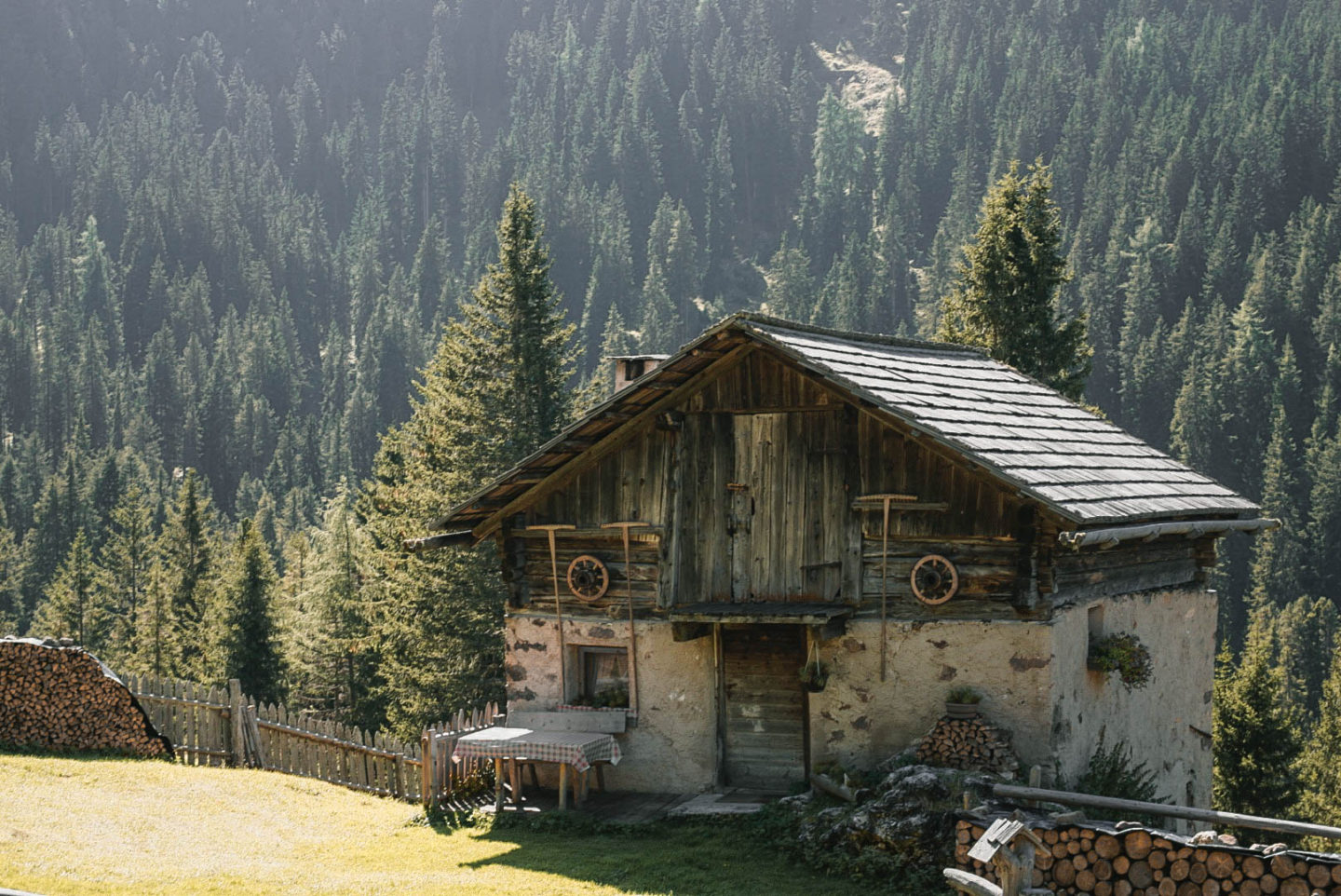
Val di Funes – Santa Maddalena
After our hike, we hopped back in the car and went out in search of the incredibly picturesque St Johann in Ranui church. Conveniently, there is a small parking area close by.
Afterwards, we watched the sunset over the valley, perched on a hill overlooking the village of Santa Maddalena, the perfect place to come for golden hour. As the day drew to a close, we watched the sun hit the top of the jagged limestone peaks, before encasing the valley in a golden glow. To reach the second viewpoint, we parked in the village and hiked up to the church and then the hill.
Useful travel tips for a trip to the Dolomites
For hotels, I often find great deals on Booking.com, with no nasty hidden booking fees.
Check out Skyscanner for finding the best flight deals.
For car rentals, I recommend booking with Rentalcars.com. I’ve always found them to have great deals on car rentals.
If you’re planning a trip to the Dolomites, or anywhere else in the world, be sure to have a look my top travel planning resources, including tips on how to save money travelling and my favourite travel planning tools.
Don’t leave home without travel insurance! I recommend World Nomads who offer reliable, comprehensive cover, including medical, evacuation, baggage and a range of activities at affordable rates. You can buy World Nomads insurance even when you’ve left home, which is rare for travel insurance companies.
Disclaimer: Some of the above links are affiliate links. If you choose to purchase using the above buttons, I receive a small commission at no extra cost to you. This helps towards the upkeep of this website for which I am very grateful.

